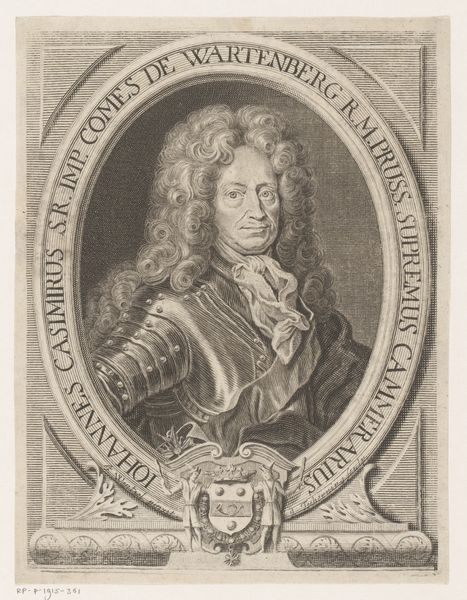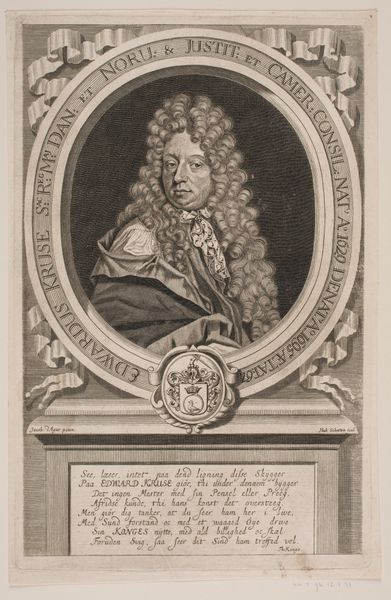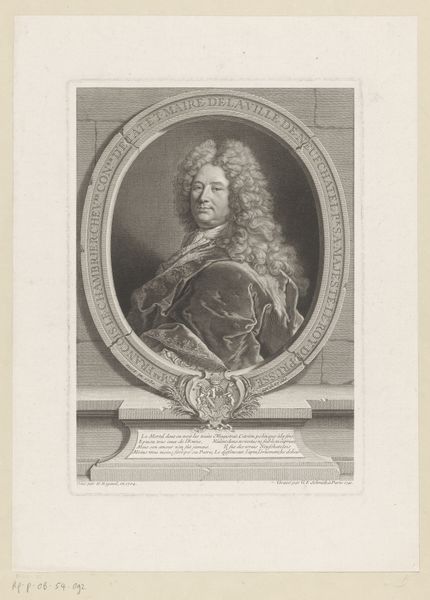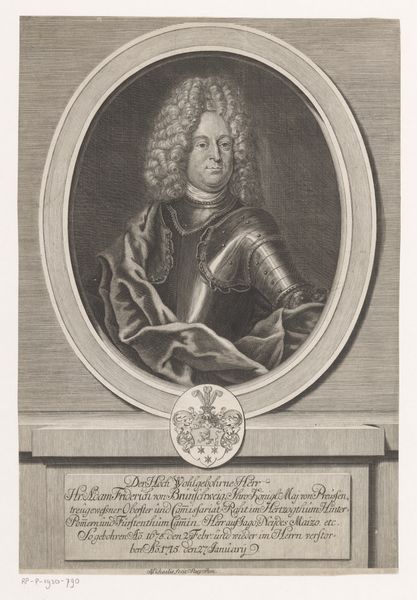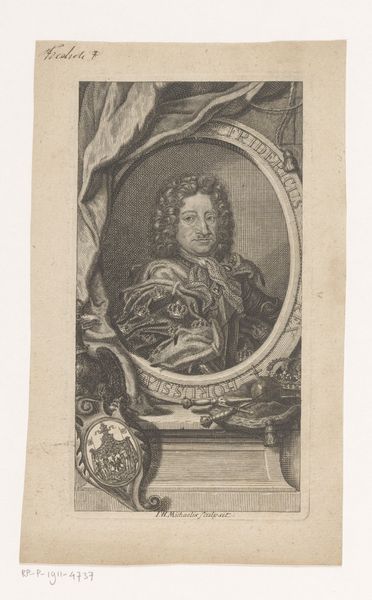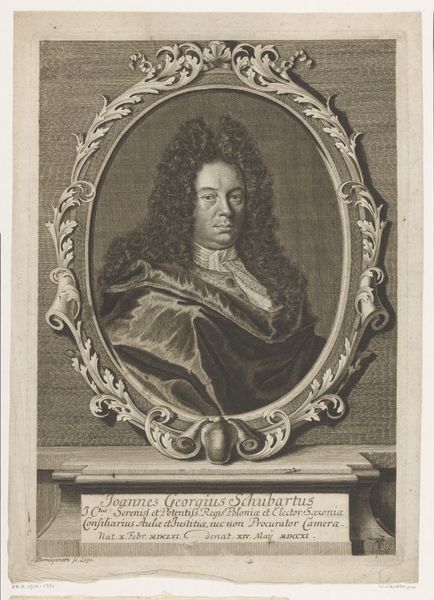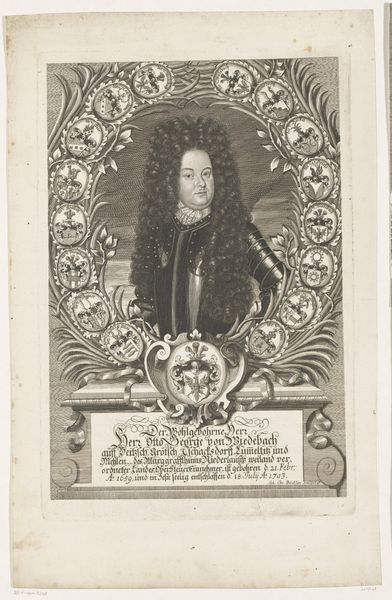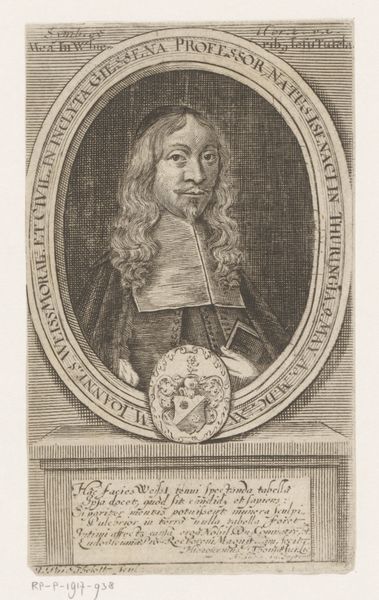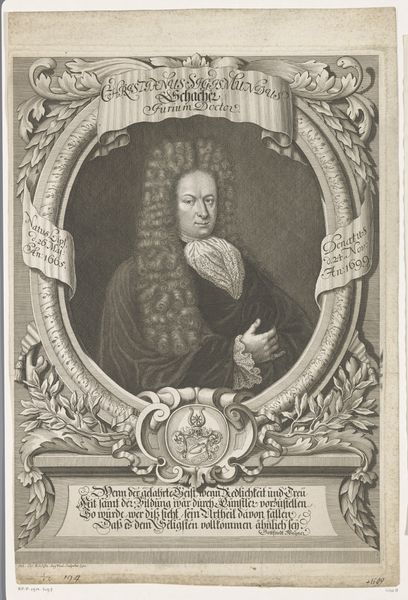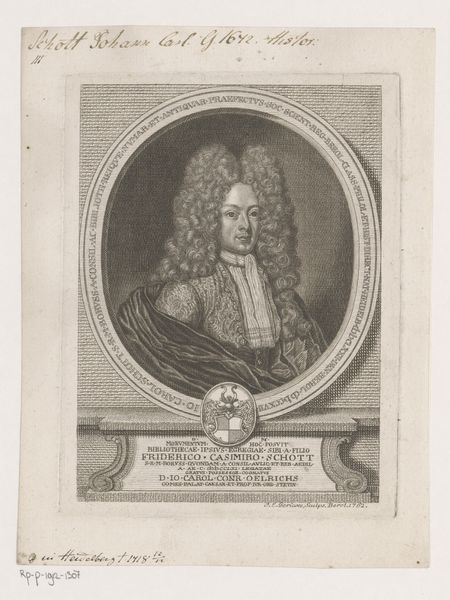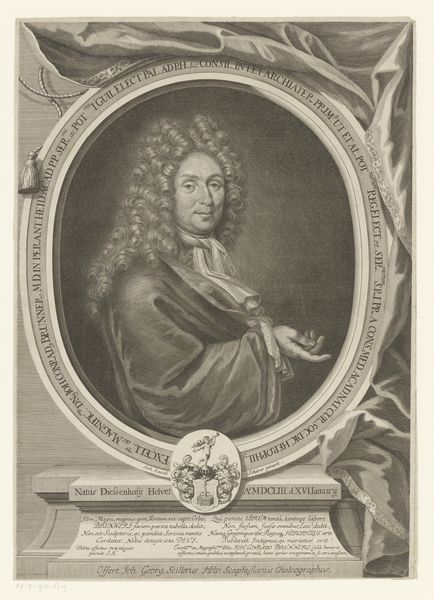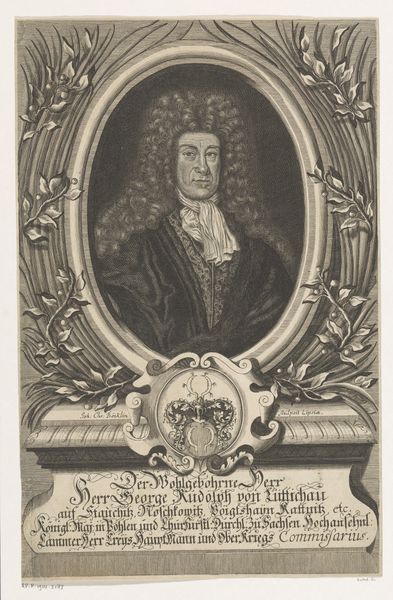
engraving
#
portrait
#
baroque
#
old engraving style
#
caricature
#
unrealistic statue
#
pencil drawing
#
history-painting
#
engraving
Dimensions: height 345 mm, width 235 mm
Copyright: Rijks Museum: Open Domain
Curator: Looking at this engraving of Nicolaus Ernst von Natzmer, likely created between 1685 and 1737 by Johann Wilhelm Michaelis, what strikes you? Editor: The wig! I mean, that cascade of hair—it feels almost overwhelming. And then there’s the juxtaposition of that flowing wig against the stark lines of the armor. It makes me think about surfaces and contrasts in a very material way. Curator: Exactly. This portrait offers insight into the visual language of power and status of that era, and the means by which they were conveyed. Natzmer's depiction is steeped in Baroque aesthetics, yes, but it speaks to something larger—the performance of masculinity within very specific socio-political structures. How does his status play into how Michaelis chooses to create and represent it? Editor: Absolutely, the armor. The intricate rendering of the armor plate really draws my attention. One can almost imagine Michaelis meticulously carving those lines into the plate. Engravings such as this weren't simply documentation; they were a demonstration of the artist's labor and technical mastery. The reproduction carries inherent prestige, not just for its subject, but also through craft. It also acted as social promotion, showing what was achievable with his chosen materials. Curator: Consider too the semiotic density—each visual element functions as a signifier in service to crafting and conveying identity. His full title sits boldly below him, but the symbolic construction happening is more intricate. This goes far beyond technical representation to ask who held the means of expression and how was the means were deployed. Editor: It certainly adds layers of complexity and depth to what we see, forcing us to think about the act of creation and consumption beyond simple aesthetics or representation. What I find really remarkable is how a seemingly simple portrait becomes a tangible entry point to discussing those questions. Curator: Agreed. A simple rendering, if we chose to see it that way, yet richly resonant, still speaking across centuries.
Comments
No comments
Be the first to comment and join the conversation on the ultimate creative platform.
